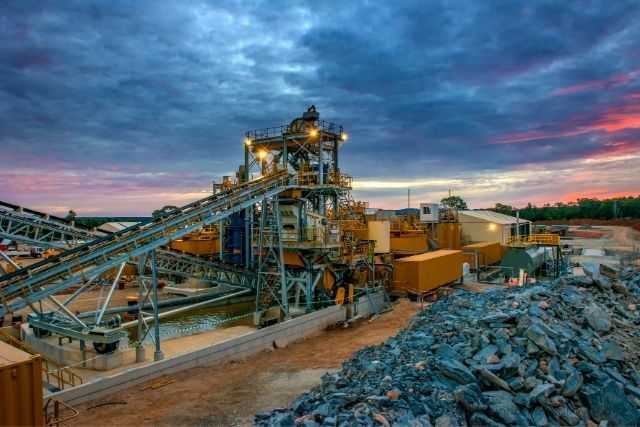The mining and extractives industry plays a significant role in the global economy, providing essential raw materials for various sectors. From metals and minerals to oil and gas, this industry is vital for infrastructure development, manufacturing, and energy production. In this blog post, we will delve into the world of mining and extractives, exploring its impact, environmental concerns, and technological advancements.

Understanding the Importance
The mining and extractives industry serves as the backbone for many sectors. Here are a few reasons why it is such a critical industry:
- Raw Material Supply: The industry provides essential raw materials like metals, minerals, coal, and oil and gas. These resources are used in construction, manufacturing, energy production, and various other industries.
- Economic Contribution: Mining and extractives contribute significantly to national and global economies. They generate revenue, create employment opportunities, stimulate regional development, and attract investment.
- Infrastructure Development: The industry’s output fuels infrastructure development, including roads, bridges, buildings, and transportation networks. Materials extracted from mines are essential for constructing these vital structures.
- Energy Production: Oil and gas extracted from the industry are crucial for energy production. They fuel power plants, provide heating and cooling solutions, and support electricity generation for various sectors.
- Technological Advancements: The mining and extractives industry drives technological advancements. Innovations in exploration techniques, mining equipment, and processing methods enhance efficiency, safety, and environmental sustainability.
Heavy Transport in the Mining and Extractives Industry
One key aspect in the mining and extractives industry is the use of heavy transport. Heavy-duty vehicles, such as haul trucks and dump trucks, play a pivotal role in moving large quantities of extracted resources from the mining site to processing facilities. The efficiency and effectiveness of these transportation systems directly impact the overall productivity and profitability of mining operations.
Advanced technologies, ranging from GPS tracking to automated driving systems, are increasingly used to optimize heavy transport operations. They enhance safety measures, improve fuel efficiency, and minimize environmental impact. Moreover, technology-driven solutions enable real-time monitoring of vehicle performance and maintenance needs, further driving operational efficiency in the mining and extractives industry.
Environmental Concerns and Sustainability
While the mining and extractives industry brings numerous benefits, it also raises environmental concerns and sustainability challenges, for example, with mining comes soil instability so it’s important that a company like Erizon Brisbane is brought in to stabilize the soil making it safe for employees to continue their job. Below are a few more environmental concerns that need to be taken into account:
- Land Degradation: Mining activities can cause significant land degradation, including deforestation, soil erosion, and habitat destruction. Effective land reclamation and restoration measures are necessary to mitigate these impacts.
- Water Pollution: The industry’s activities can contaminate water sources through the release of chemicals, sediments, and mine tailings. Implementing robust wastewater treatment strategies and practicing responsible water management are essential.
- Air Pollution: Mining and extractives operations release pollutants into the air, contributing to air quality degradation. Reducing emissions, implementing dust control measures, and using advanced filtration technologies can help mitigate this issue.
- Climate Change: The extraction and burning of fossil fuels contribute to climate change. Transitioning to cleaner energy sources, promoting energy efficiency, and investing in carbon capture and storage (CCS) technologies can help address this challenge.
- Community Engagement: Social impacts, such as displacement of communities and conflicts over land rights, can arise from mining and extractives operations. Community engagement, transparency, and responsible governance are crucial for building positive relationships and addressing these issues.
Technological Advancements and Innovation
The mining and extractives industry is embracing technological advancements and innovation to improve operations and minimize environmental impact:
- Automation and Robotics: Autonomous vehicles, drones, and robotics are increasingly used in mining operations. These technologies enhance safety, increase productivity, and reduce human exposure to hazardous environments.
- Remote Sensing and GIS: Remote sensing techniques and Geographic Information Systems (GIS) enable accurate mapping, monitoring, and assessment of mining sites. This data aids in planning, environmental impact assessment, and sustainable resource management.
- Data Analytics and Artificial Intelligence: By harnessing big data and utilizing artificial intelligence algorithms, mining companies can optimize operations, predict equipment failures, and make informed decisions to enhance efficiency and safety.
- Sustainable Practices: Mining companies are adopting sustainability practices, such as renewable energy integration, water recycling, and waste reduction. These initiatives reduce environmental impact and contribute to long-term sustainability.
- Circular Economy Approach: The concept of a circular economy is gaining traction in the industry, focusing on reducing waste, reusing materials, and recycling. This approach minimizes resource consumption and promotes a more sustainable mining and extractives sector.
In conclusion, the mining and extractives industry plays a vital role in supplying essential raw materials, driving economic growth, and supporting infrastructure development. However, it also faces environmental challenges that require responsible practices and innovation. By embracing technological advancements, implementing sustainable strategies, and engaging with communities, the industry can strive toward a more sustainable and responsible future.






